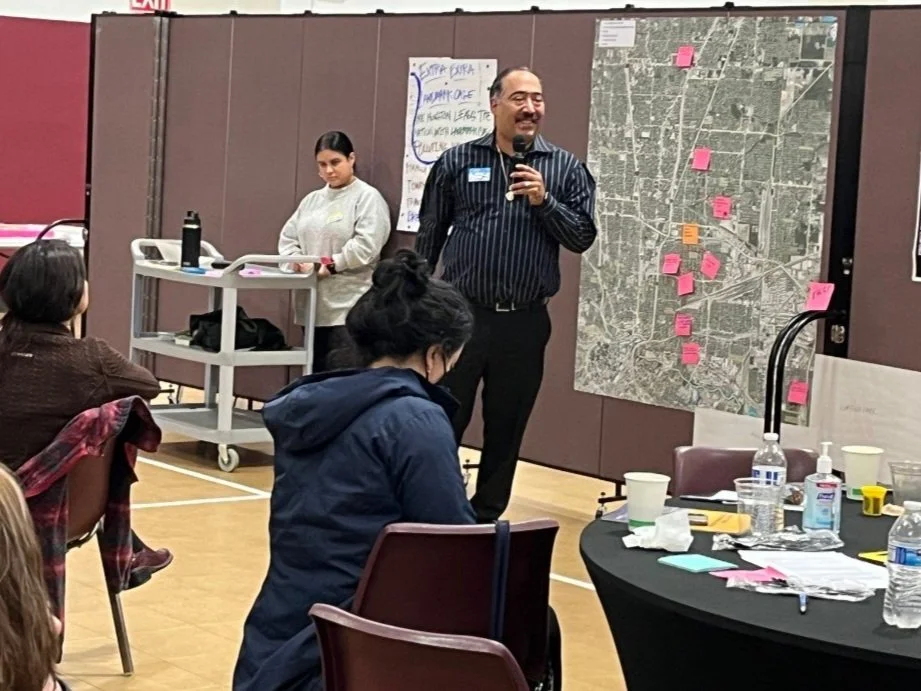Getting Ready for IRA Funding in Houston
Artist Matt Manalo of Alief Art House (center) led Hive Fund Houston grantee partners in a group art project during a day-long gathering on February 3.
“Uncertainty” was the word of the day when leaders from 18 Hive Fund grantee partner organizations gathered in Houston to explore how new federal climate dollars can be used to bring clean and resilient energy and transit to the city’s northeast quadrant — home to predominately Black and Brown residents who have grappled with redlining and disinvestment for decades. With the Inflation Reduction Act’s (IRA) new climate funding programs rolling out at breakneck speed, funders and community groups alike are scrambling to understand the opportunity and what it will take to make good on the IRA’s promise of benefitting disadvantaged communities.
“We came together to collectively map where clean energy and climate justice projects in NE Houston are already being planned and should be built, facilitate cross-pollination between the groups, and figure out how we could layer projects to have a greater impact,” said Bakeyah Nelson, Principal of Community Health Collaborative Consulting, who is helping coordinate the effort.
Juan Flores, Community Air Monitoring Program Manager for Air Alliance Houston
Over the course of the day, grantee partners shared stories from their communities and visions for their future, and mapped where — geographically and conceptually — their work fits within the broader context of other organizations in the room. Groups also shared the challenges they’ve experienced working with local governments and began brainstorming educational and civic engagement strategies that could raise priority community-based climate justice projects higher on decision-maker agendas.
"When I've gotta call the news [media] to get my garbage picked up there's a problem,” said Keith Downey, Founder and Director of Communications for Northeast Houston Redevelopment Council. “Elected officials have you thinking they've got the power, but the power is actually with you, here in this room."
In the afternoon, EPA Deputy Assistant Administrator for Environmental Justice Matt Tejada provided a briefing on the EPA’s environmental and climate justice technical assistance and grantmaking plans for distributing $3 billion in grants to community-based organizations for a range of activities in disadvantaged communities, including:
Community-led air and other pollution monitoring, prevention, and remediation;
Investments in low- and zero-emission and resilient technologies and related infrastructure and workforce development that help reduce greenhouse gas emissions and other air pollutants;
Mitigating climate and health risks from urban heat islands, extreme heat,
Climate resiliency and adaptation; and
Facilitating engagement of disadvantaged communities in state and federal advisory groups, workshops, rulemakings, and other public processes.*
The EPA is now taking public comments to further shape and refine the program.
Grantee partners came out of the meeting committed to a loose collaborative that will work together to deepen community engagement, identify priority projects, and leverage federal and other available funding to develop those projects.
Get your Houston groove on!
To keep us all energized, participants contributed some favorite songs to a shared “Houston Morning Groove” playlist.
This work in Houston is the first of what we hope will be ten strategic IRA demonstration sites across the US South, where we’ll provide coordination and project management support, in addition to multiyear grants, to help connect communities and their priorities with these new funding opportunities and ensure the IRA lives up to its promise.
* Sec 60201 of the Inflation Reduction Act.


